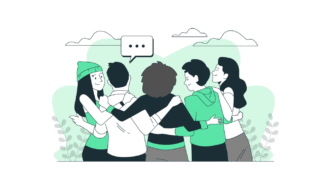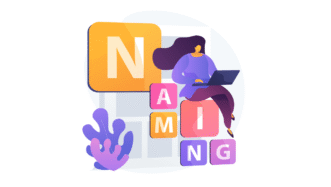LESSON OVERVIEW
In this lesson, students learn vocabulary useful when talking about fear or relief, watch a video about horror films, and describe situations in which they felt uneasy or scared.
VOCABULARY
The lesson starts with a warm-up activity in which students rank things from a list from the most to the least scary (e.g. heights, injections, germs). They compare their rankings in pairs and decide how similar or different they are. Then, students read ten sentences and try to work out meanings of some lexis from the context (e.g. sinister, disturbing, adrenaline junkie, fight-or-flight response). The words and phrases from the sentences can be used when talking about fear or shock. After that, they match the words and phrases from the sentences with their definitions. They also need to answer a set of questions to check their understanding of the new lexis (e.g. What kinds of scenes in a TV programme might be considered disturbing?).
VIDEO & DESCRIBING CHALLENGING SITUATIONS
Before watching a video about horror films (note that some students may find the images in the video disturbing), students discuss the genre and what they think makes people like it. Then, they watch the video for the first time and check their answers to the questions in the previous exercise. During the second viewing, they complete seven sentences with words or phrases from the video. After that, students discuss the films mentioned in the video and other horror films, as well as their features. In the last part of the lesson, students match sentence halves to create phrases used when talking about fear, shock, surprise and relief (e.g. …it sent shivers down my spine, …almost jumped out of my skin, breathe a sigh of relief). Then, they look at a list of situations (e.g. speaking in public, attending a job interview) and describe a time in their lives when some of the situations took place. They discuss how they felt in these situations. Finally, students write an anecdote based on one of the situations.
WORKSHEETS
Subscribe to unlock these and many other Standalone lesson lesson plans with the Unlimited plan
Subscribe













Excellent lesson, very original. Thanks so much.
Great! Glad your students enjoyed. 🙂
Hey guys!
I’ve been using your work for years and I love it! Thank you very much! I am just feeling that there is a while since you did an interesting C1 class for Premium subscription, it’s usually for Unlimited accounts. Thank you very much and awesome job!
Ha, there’s actually a C1 lesson coming on Monday that will be available to Premium subscribers! Of course, we’ll try to balance better what type of lessons Premium subscribers get in the future as well.
Good to see an interesting C1 class again.
Thank you for this excellent material. The video is really interesting (approved by my teen students).
The vocabulary is level appropriate and there’s plenty of questions and tasks that give students the opportunity to utilise the new language.
Lucia, thank you so much for your feedback! We’re happy you find it useful 🙂
I have been a premium subscriber of yours for a while now, but recently upgraded to unlimited to access this particular lesson. What a good move it was! I used this with my adult class and two high school classes, and they all loved it. I’m sticking with unlimited! Thanks again for the amazing materials.
Well, we really happy to hear that you enjoy using this lesson plan and having the Unlimited plan in general! It not only unlocks more lesson plans but also some unique lesson formats, such as Critical Reading Club or the Speaking Class worksheets. I promise we will continue creating more quality teaching materials for you and other teachers out there!
This lesson’s structure may fit not only C1 students but also B1 or B2 students.
It gave me goosebumps 🙂
It is clear, coherent and exciting.
Thrilling! Happy to have you, and hopefully your students, excited a bit 🙂 Enjoy teaching this lesson more!